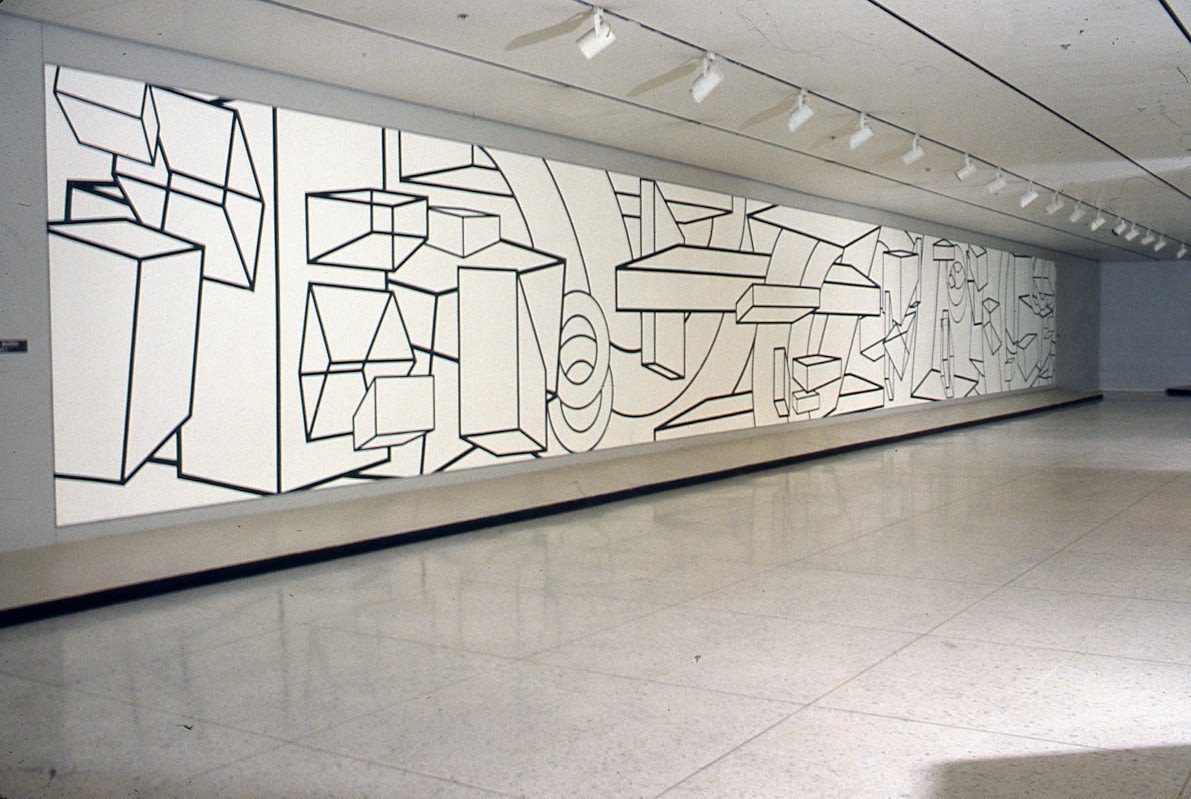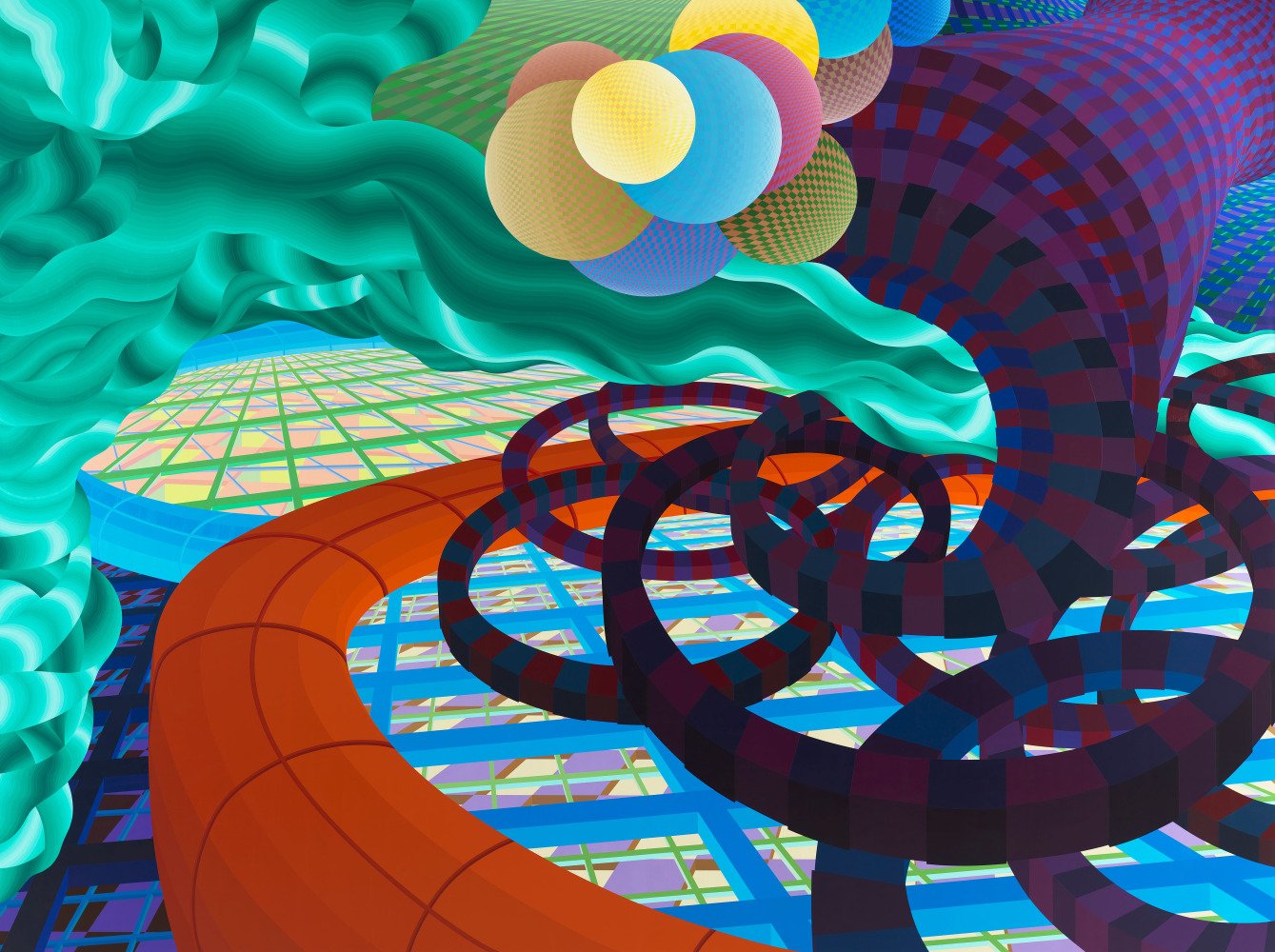The Groove 176 - How to Push the Limits of Your Field
HOW TO PUSH THE LIMITS OF YOUR FIELD
In the quest for progress and innovation, pushing the limits in your field is a transformative journey that transcends the boundaries of convention. For the creative and ambitious, it’s the pursuit of a lifetime. It signifies an unwavering commitment to challenge the pre-existing ways, embrace the unknown, and pioneer new frontiers.
If you have been doing the same thing for a long time and wonder why you feel you aren’t getting better results, delving into Al Held's long-life dedication to transcending boundaries can serve as a compelling catalyst to reevaluate your strategies.
Born in 1928 in Brooklyn, New York, Held was a child of Eastern European immigrants who grew up during the Great Depression. His life was all about incrementally and relentlessly pushing and expanding the limits of what one can do in their field.
Commit to Progression in One Area
Al Held photographed in his studio by Sam Francis in 1955.
In the world of artists and serial entrepreneurs, it’s not uncommon to find those who stretch their interests over many different fields and enterprises. Al Held, however, was committed to abstraction and saw his shifts as long phases where he needed to satisfy his curiosity and leave his mark on history.
He began his career in the 1950s as what is now defined as a second-generation abstract expressionist, exploring gestural mark-making and emotional expression through his paintings. But by the end of the decade, he felt that too many artists were making the same type of work and he wasn’t interested in being a part of such a crowded movement. So he left traditional oil paint behind and traded it for newer, acrylic vivid hues. He began painting geometric forms, sharp lines, and strong transitions between color areas, and thus a newfound style of abstraction called “hard-edge” was born.
But Held was not satisfied with hard-edge, and in a daring departure from the chromatic palette, he embarked on a transformative journey in 1967, using only black and white in his canvases. In this monochromatic odyssey, Held explored geometric abstraction with the intent of creating the illusion of depth and movement in a completely flattened surface.
Al Held, Rothko’s Canvas, 1969-1970, acrylic on canvas, 10 x 90 ft. Empire State Plaza, Albany, New York.
This is when the magnum opus known as "Rothko's Canvas" emerged as a testament to Held's ingenuity. Commissioned by Nelson Rockefeller, then governor of New York, specifically for the Empire State Plaza in Albany, this monumental masterpiece stretches an impressive 90 feet. Here, black geometric shapes, diverse in width and size, seamlessly transcend their static existence, creating an optical illusion that mesmerizes the observer. The title was a poignant homage to Mark Rothko, who had died in 1970, the year Held completed the work.
Al Held's artistic metamorphosis was not marked by swift changes but unfolded as a gradual evolution. His shifts from abstract expressionism to tightly controlled geometric works were a testament to a deliberate and methodical exploration of form. With a patient hand and a discerning eye, the artist navigated the subtleties of his craft, underscoring the depth of his commitment to refining his artistic language, proving that lasting innovation often emerges from a measured and intentional journey.
Good Things Do Not Come Quickly or Easily
Al Held, Genesis II, 2001-2003, acrylic on canvas.
In the realms of art and business alike, the adage holds true: good things do not come quickly or easily. This encapsulates the essence of the arduous yet rewarding journey where the path to success demands patience, resilience, and a steadfast commitment to the long game.
Al Held said that he reworked his paintings every day. “…The characteristic of my paintings always have been labor-intensive paintings. Things do not come quickly or easily. I don't trust the first shot. And have nothing against it, in the sense I think, I would like to say that the first shot is untrustworthy…”
Coming from someone who’s original training was in the visceral and gestural school of abstract expressionism, this was such a departure in thinking and execution. What Held was telling us is that impulsive initial moves may present a surface impression, but it's in the iterative processes and strategic adaptations that the true success story unfolds.
Experimentation Paves the Path to the Future
Al Held, Passing Through (detail), 2004, glass mosaic. 53rd Street and Lexington Avenue subway station, New York.
If you want to expand the horizons of possibility in any field, you need a fusion of visionary thinking with relentless experimentation.
By 1978, Held had returned to the use of color, and his paintings became futuristic landscapes that look like utopian video game sets and whose perfect lines and color combinations seem like a product of artificial intelligence.
In the 'Luminous Construct' series, which began in 1985 and continued until the end of his life in 2005, Held drew inspiration from the intricate perspectives and illusionistic mastery reminiscent of the Renaissance era. These geometric creations not only pay homage to the artistic legacy of the past, but also ingeniously weave a contemporary narrative that engages the viewer between form and perception.
This was also the era when his public commissions came in droves, including the 440-ft-long etched glass for the Ronald Regan Airport in Washington DC, and the iconic “Passing Through” mural on the 53rd Street and Lexington subway station that most New Yorkers have seen at least once. These commissions and many others not only further cemented Held’s legacy, but also remain fresh and undated many decades after their completion.
Much in the same vein that characterized Al Held’s career, once you have mastered something, the next phase should always be to ask: what else can I do here? If I’ve already done something hundreds of times, where is it taking me next?
JUMPSTART: IGNITE YOUR CREATIVITY FOR PROFIT, INNOVATION, AND REINVENTION
I’ve put together a free webinar for those of you who are not members of my online course and inner circle.
In the course, there are dozens of hours of transformative content for you to watch or listen at your own pace plus access to live groundbreaking monthly calls. These handful of testimonials say it all.
If you’d like to watch it, please register here (it’s on auto-repeat every 15 minutes once you have registered).
But if you are ready to enroll now, you can do so here.
HOW CREATIVITY RULES THE WORLD
If you enjoy The Groove, you will love my book.
How Creativity Rules The World is filled with practical tools that will propel and guide you to get any project from an idea to a concrete reality.
Have you gotten yours yet?
It’s in three formats: hardcover, eBook and audiobook.




